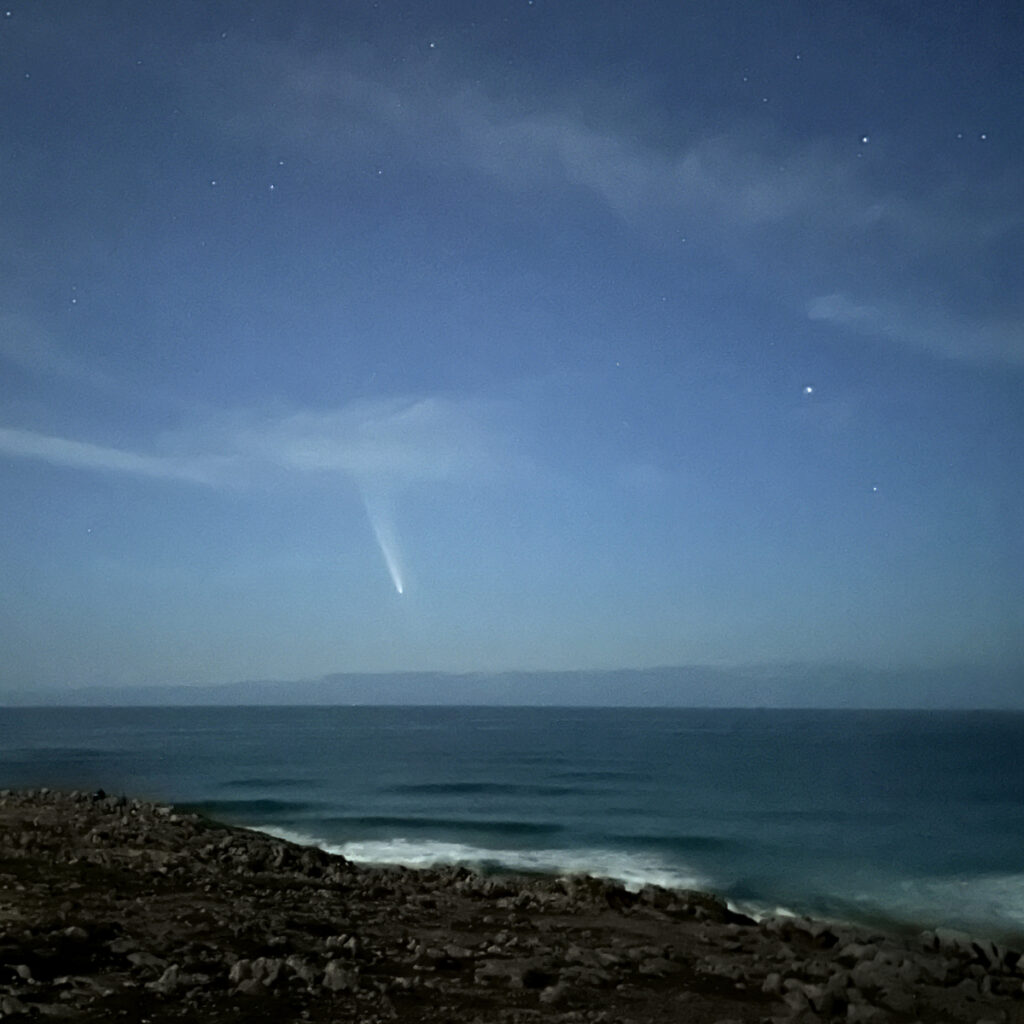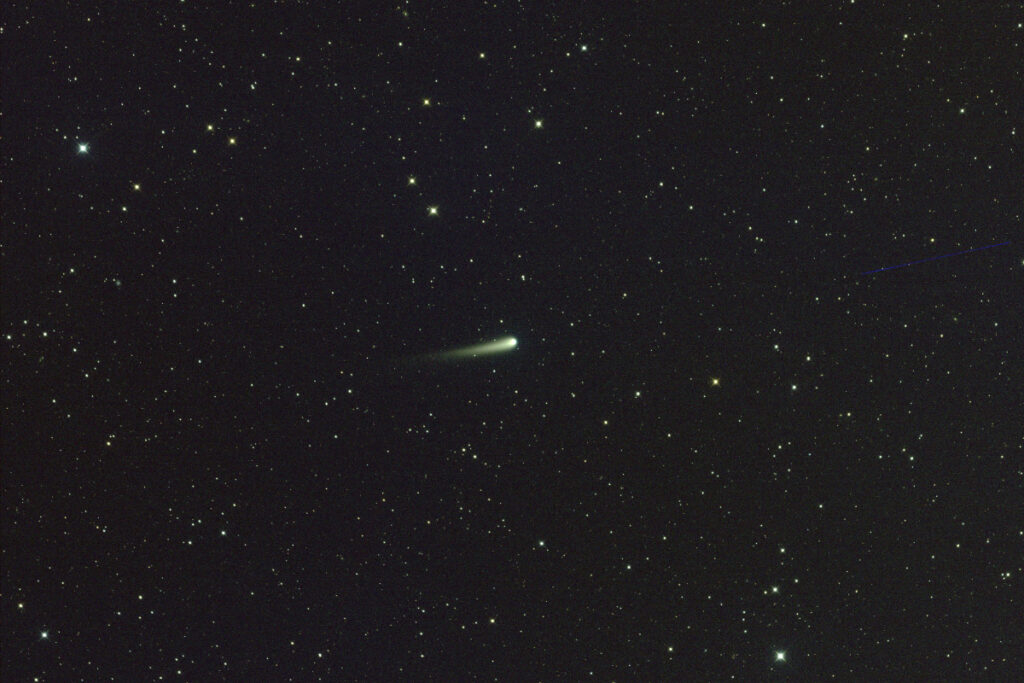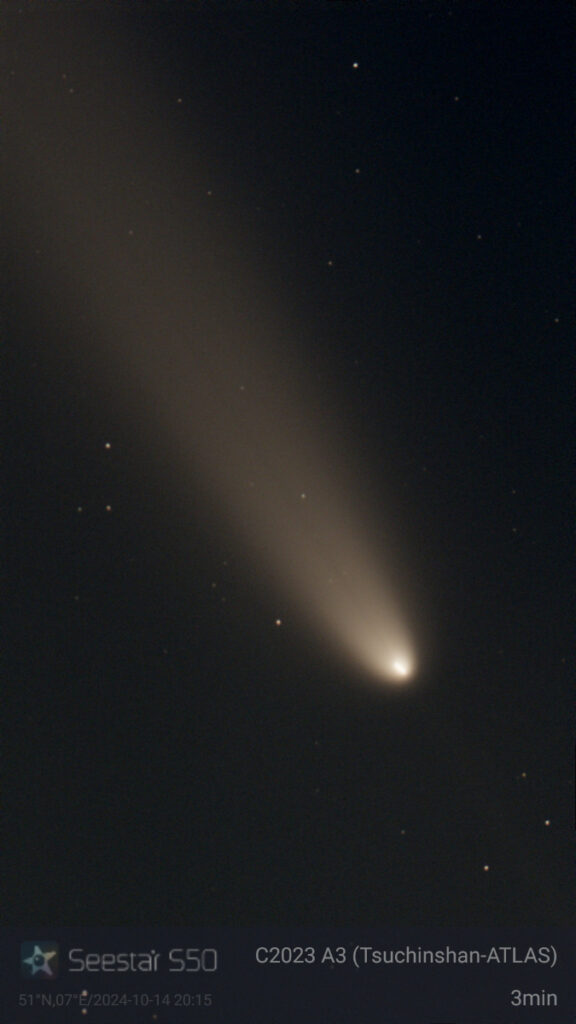Great news for aspiring astronomers and planetary defenders!
The spectacular comet C/2023 A3 (Tsuchinshan-ATLAS) is currently visible in our night sky. This extraordinary event provides an incredible opportunity to engage our students in the StAnD – Students As Planetary Defenders – Erasmus+ project!

Comet discovery
C/2023 A3 (Tsuchinshan–ATLAS) is a comet from the Oort Cloud discovered by the Tsuchinshan Chinese Observatory (Purple Mountain Observatory), on 9 January 2023, and independently by Asteroid Terrestrial-impact Last Alert System (ATLAS) South Africa, on 22 February 2023.
From Hawaii, it was already visible in early summer 2024 with its green tail.

© Paul Breitenstein, AiM.
As this comet streaks across the sky, students can learn about its journey, visibility, and the science behind comets. This is a fantastic way to spark curiosity about astronomy and the universe.
Observation Tips:
- Check the sky after sunset, as the comet is best viewed in the western horizon.
- Use telescopes or binoculars for an enhanced experience.
- Discuss what makes this comet unique – it visits our solar system approximately every 80,000 years!

Let’s inspire the next generation to appreciate and protect our planetary home through hands-on learning and exploration.
Happy stargazing!

